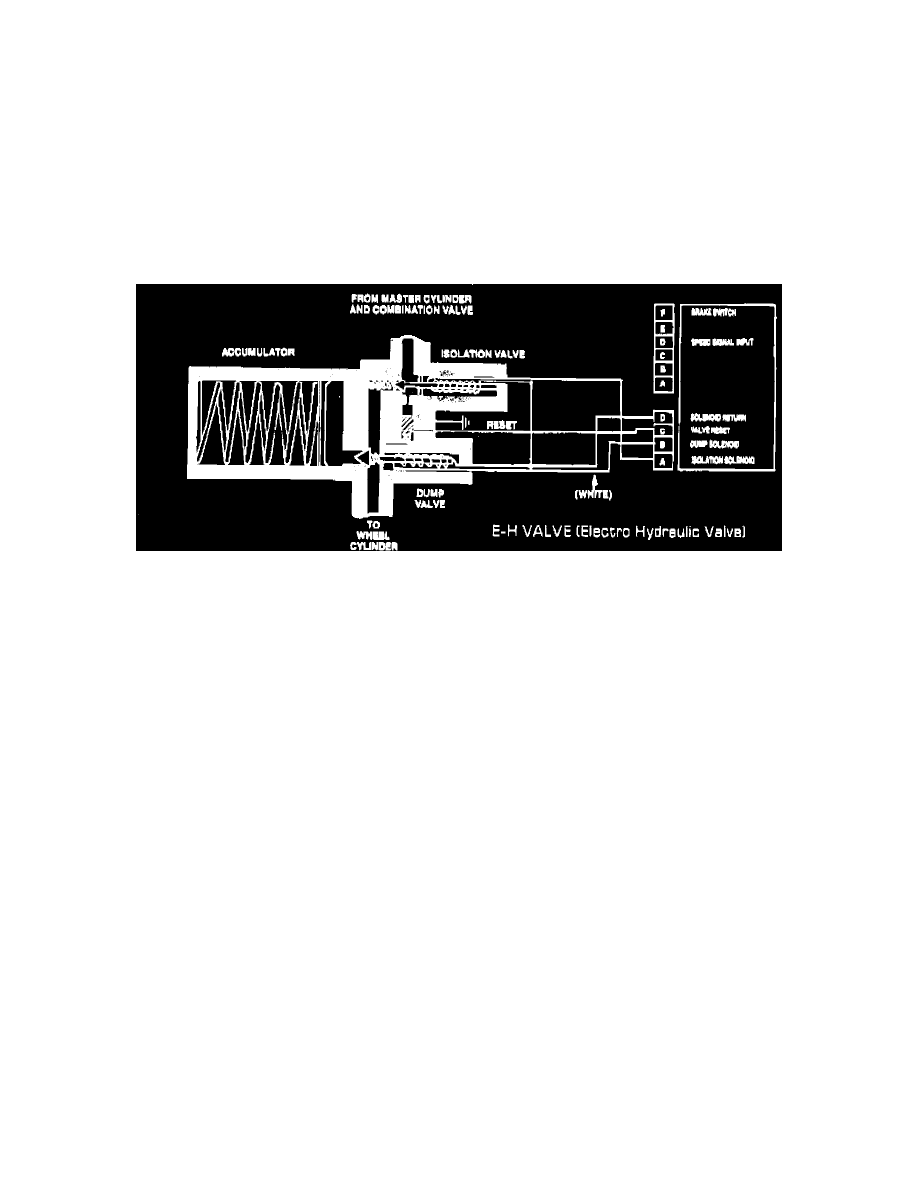W 250 Pickup L6-359 5.9L DSL (1989)

Brake Pedal Assy: Technical Service Bulletins
`False' or Dropping Pedal Condition
WAGNER BRAKE CENTER
BRAKEFAX TECHNICAL TIPS
Bulletin No.
24 Date
November, 1989 Vehicle Make/Model
DODGE FORD and GENERAL MOTORS TRUCKS Equipped with Rear Anti-Lock Brake Systems
Fore:
RABB (Rear Anti-Lock Brake System) GM & Dodge; RWAL (Rear Wheel Anti-Lock) Topic False or Dropping Pedal
E-H VALVE (Electro Hydraulic Valve)
Some of the above-mentioned vehicles may experience a "false" or dropping pedal condition that may feel very similer to a master cylinder with an
excessive amount of by-pass. Upon installation of the replacement master cylinder, there is little or no improvement in pedal feel or height, This
condition may be caused by the dump valve in the E-H (Electro Hydraulic) valve being held slightly, open by a small particle of foreign material. This
allows fluid to flow into the accumulator and create the low or dropping brake pedal.
To determine if this is the cause of the dropping pedal, begin by disconnecting tha steal line at the master cylinder that serves the rear brakes. Install a
solid tubing plug into the outlet that serves the rear brakes. Note: When installing the plug, have an assistent depress the pedal about one inch to purge
any air from the outlet. Tighten the plug while the assistant holds the pedal in this position. After tightpring the plug, continue to apply pressure to the
pedal. This will prevent damage to the primary cup in the moster cylinder as the cup moves across the vent port. If the pedal no longer drops as it did
with the rear brakes connected, this would indicate that the problem is in the rear brakes and not the master cylinder.
The next step would be to block off the outlet port of the E-H valve and retest the brake pedal as done previously. If the dropping pedal reappears, the
problem is in the E-H valve and most likely caused by fluid leaking into the accumulator of the E-H valve. If this is the case, it will be necessary to
change the valve. The E-H valve, including the accumulator and valving, is not serviceable.
Note that brake fluid over a period of time absorbs contaminants, therefore, annual flushing and replacement with clean, fresh brake fluid will help to
prevent this condition from occurring.
